PlayStation Portal review: weird but comfortable PS5 remote play

After spending several hours with PlayStation Portal, the first thing you notice is that PS5's remote play technology is surprisingly good.
I tested Portal in a 2.4 GHz Wi-Fi environment, using an extender. Wi-Fi extenders are typically streaming's worst enemies, and we were pleasantly impressed with the performance - especially when compared with Logitech G Cloud, whose performance wasn't as brilliant.
What really makes it work is how close you are to your modem or extender, more than the available bandwidth. With a 40 Mbps extender, PS Portal's remote play didn't suffer from on-screen artifacts or lag when we stayed relatively close. On the other hand, in 200 Mbps mode, we noticed some hiccups when being in a different room.
When it works (and it does in most cases), the remote play experience is very good, without the slightest latency. I played Call of Duty Modern Warfare 3 for hours, and it was like doing it on the console.
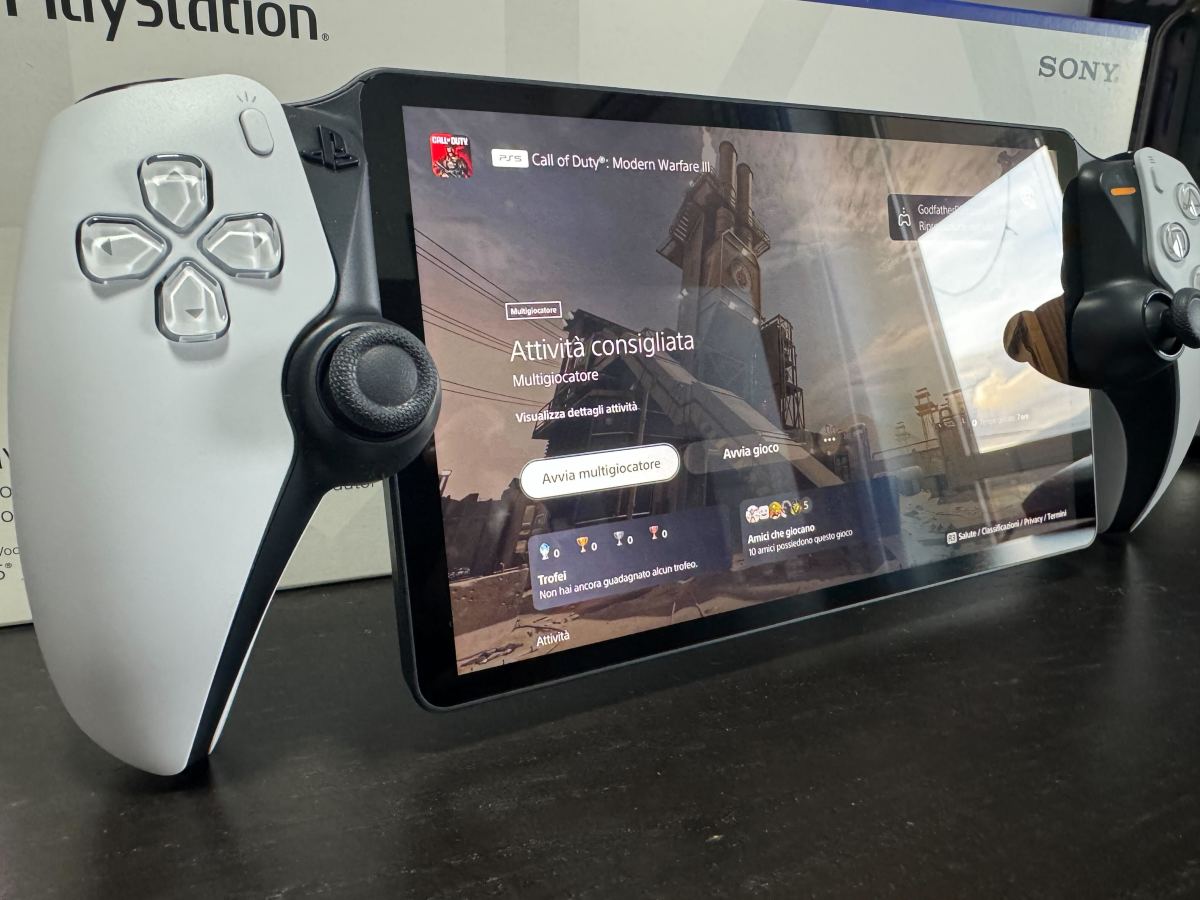
It's just a comfortable gaming experience. After all, we are holding a proper DualSense, and not some built-in controller, which is not at all common for such a device.
The 8-inch LCD screen also feels large, which helps when it comes to longer sessions. I've been playing on an iPhone 15 Pro Max for a while, and it's a smartphone that, by that segment's standards, is huge. The quality and scalability of current-gen console games such as Resident Evil Village is impressive, but it's tough for you to play for too long. And that's mainly because of the screen size - 6.7" might be a lot for a phone, but for gaming, not so much.
PlayStation Portal's screen, on the other hand, is large enough. And while choosing to keep it so bare - practically glued in the middle of a DualSense - attracted criticism in terms of design, it pays off as it manages to keep the device in a tolerable weight range. So, for those pointing out that PlayStation 5’s remote play is also available on smartphones: yes, it is, but it's a much more comfortable experience on Portal.
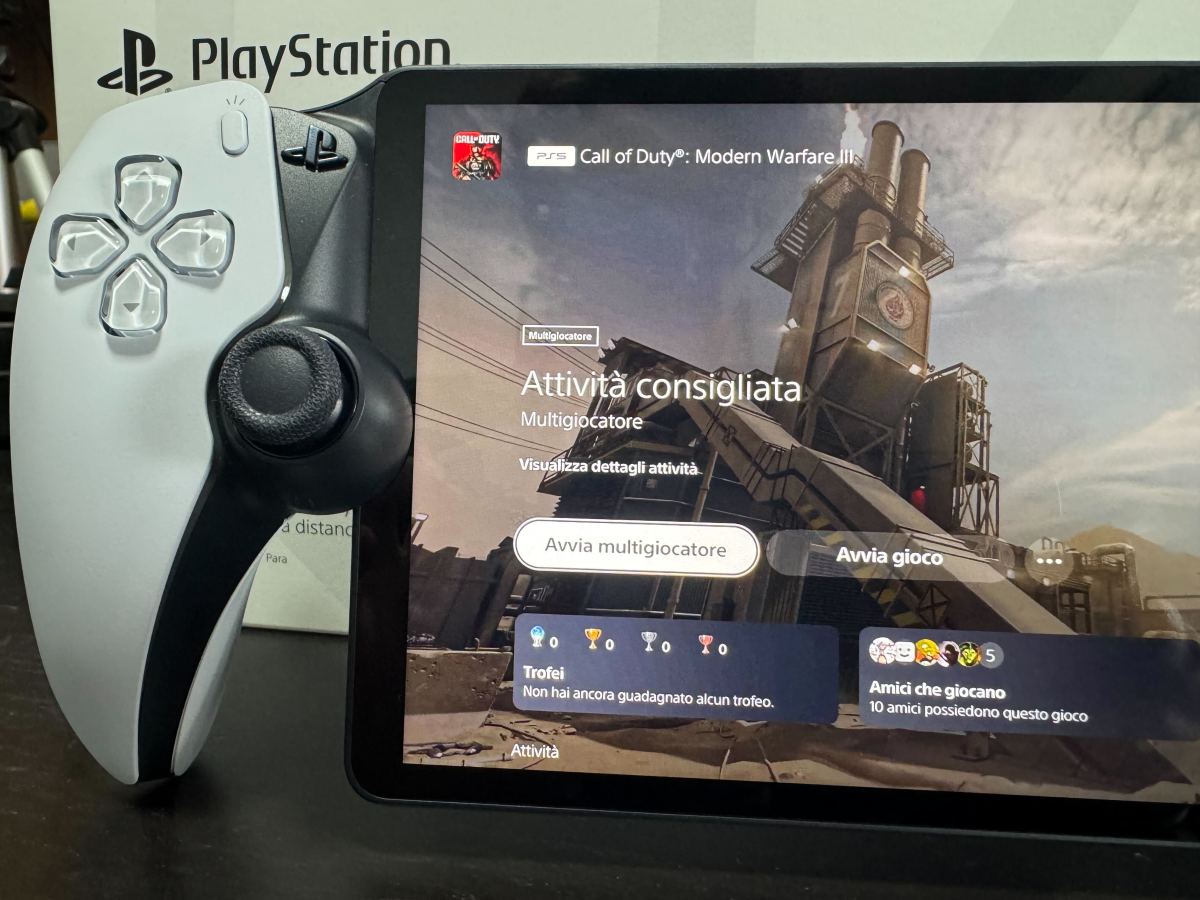
You should compare it to a tablet, for those who still have one at home. Of course, a tablet is not just for remote play, and doesn't entirely depend on another device (a PS5) being constantly on. But even a tablet doesn't come with a $74.99 DualSense controller included, and often doesn't fit the same price range.
The display's quality is good enough, with adjustable lighting, and succeeds in preserving the console experience, both in terms of visuals and smoothness.
Banding can be a problem at times, when you have darker colors on the screen, starting with the PS5's gray dashboard, but that's more due to streaming compression rather than the screen itself.
Also, transitioning from 4K to 1080p can be noticeable, with a slight drop in image quality. We've felt some sort of compression on Marvel's Spider-Man 2 and Call of Duty Modern Warfare 3, as a couple of examples.
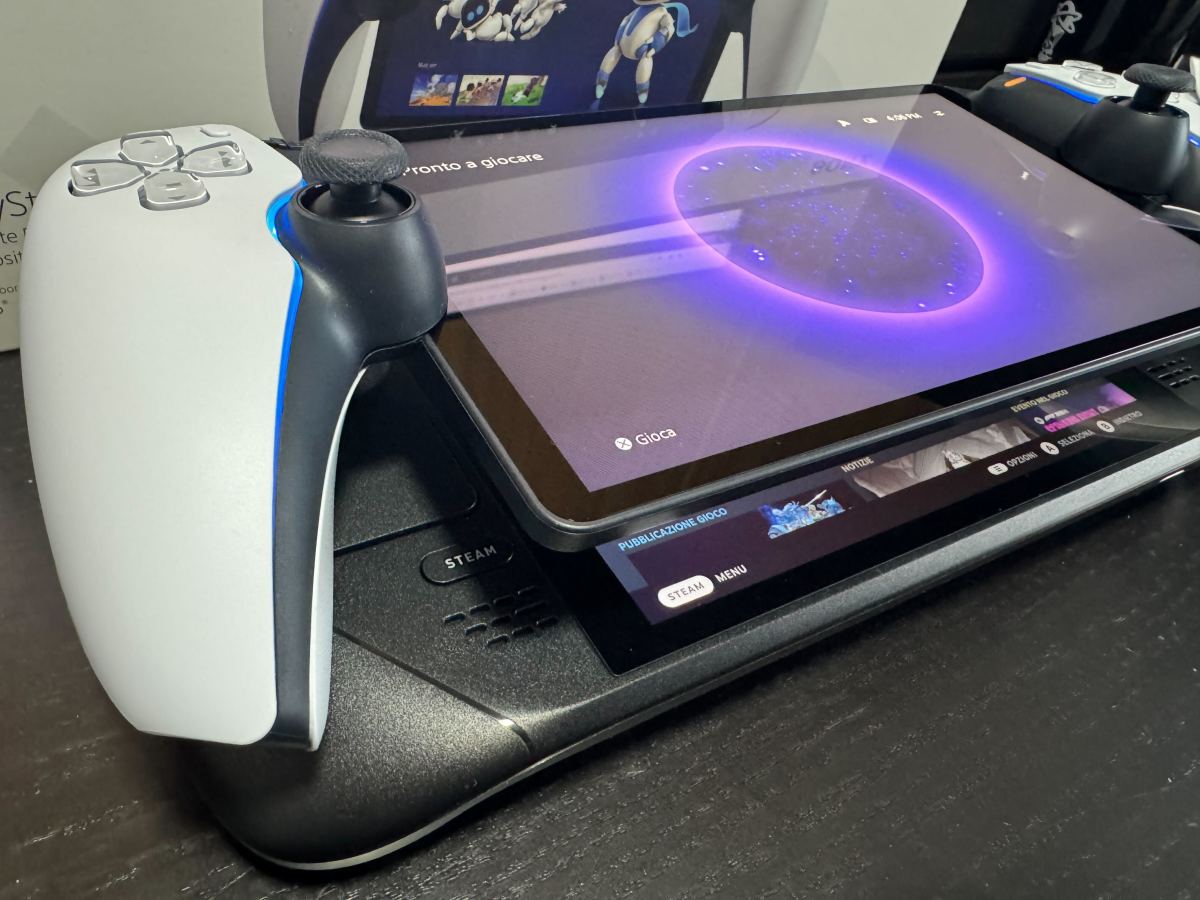
As it's not a native experience, some compromises for the sake of portability have to be accepted. But the pro here is you can play anywhere you want (provided you have your PS5 turned on, again), even games that might never existed in this capacity and, for those who care, while staying in the PlayStation ecosystem.
With such a large screen, it inevitably takes a few hours to get the hang of having something in between the two ends of a DualSense. Once you do, it's just as sharp and precise as the original, though. This is despite the sticks being smaller than the basic DualSense, as they'd eat up even more screen space, otherwise.
In the long run, we're concerned about potential drifting issues. The white coloring also means it’ll be tough to keep it clean and pristine as on the original controller for too long.
The PS5-style design touches are there - the white shell on the back, the LEDs around the ends of the DualSense lighting up when pressing the PlayStation button. But as you might have noticed, Portal's look is not particularly inspired. In some ways it looks tacky, and part of a decisional process that still feels a bit rushed.
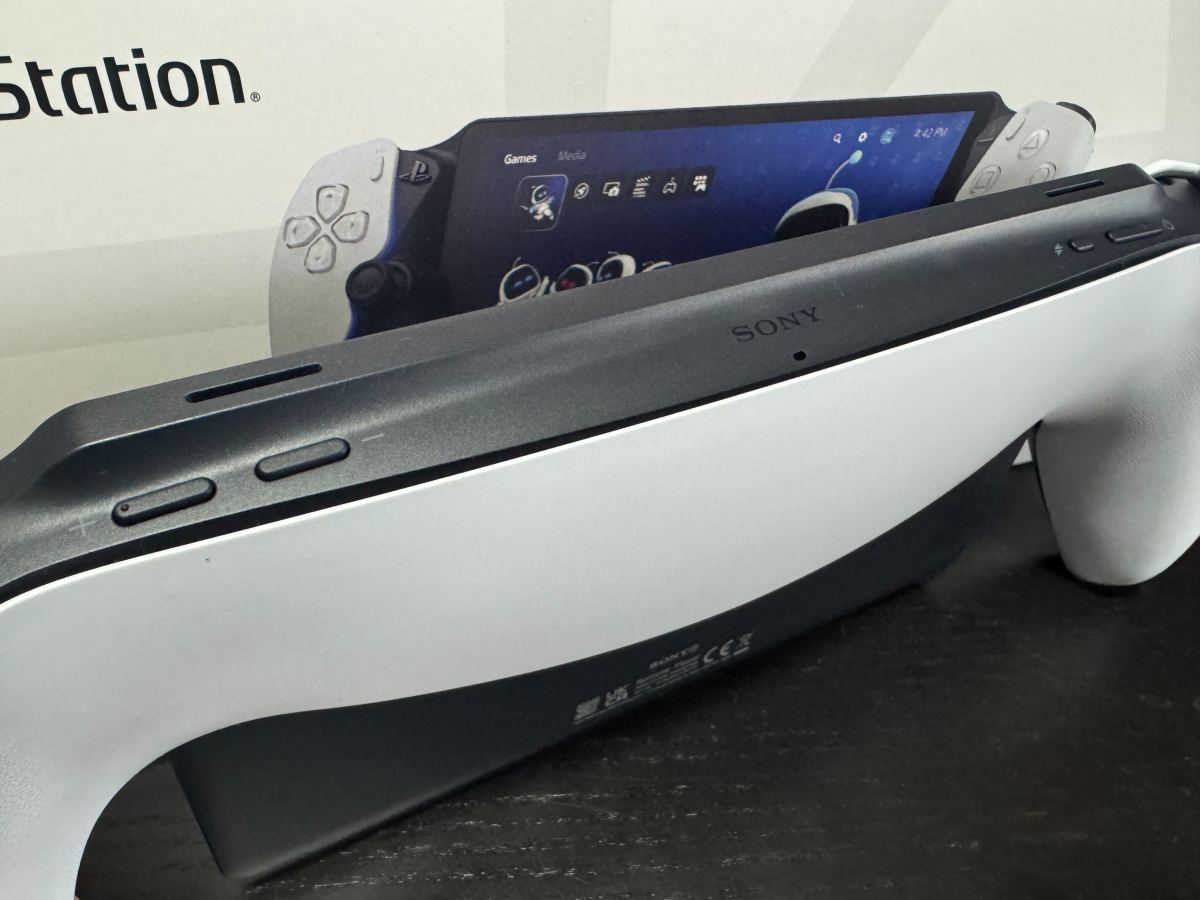
We could go as far as mentioning that it's not as ugly as it seems in the promotional photos, and that a display this large will always appeal to gamers. But there are more serious cons to consider.
Battery life seems inferior to other cloud gaming and remote play devices. One third of the battery goes away after playing for one hour and a half, with standard settings on haptic feedback intensity and lighting. This is in line with the DualSense's not-so-excellent battery life.
PlayStation Portal's software is the biggest disappointment, though. It just mirrors your PS5 the same way any other remote play-connected device would. Your console doesn't even know you're specifically using a Portal instead of a random phone.
The only addition is a layer that acts as a bridge between Portal and PS5, which you can only see when you turn the remote player on. The problem is that this layer is the only place where you can raise or lower your screen lighting, change the haptic feedback intensity, and even check the battery life. This means you need to reboot the Portal if you want to see how much playtime you have left. If you go look for the Portal in the PS5 accessories, you don't see any kind of info regarding it, but still those of the connected DualSense.
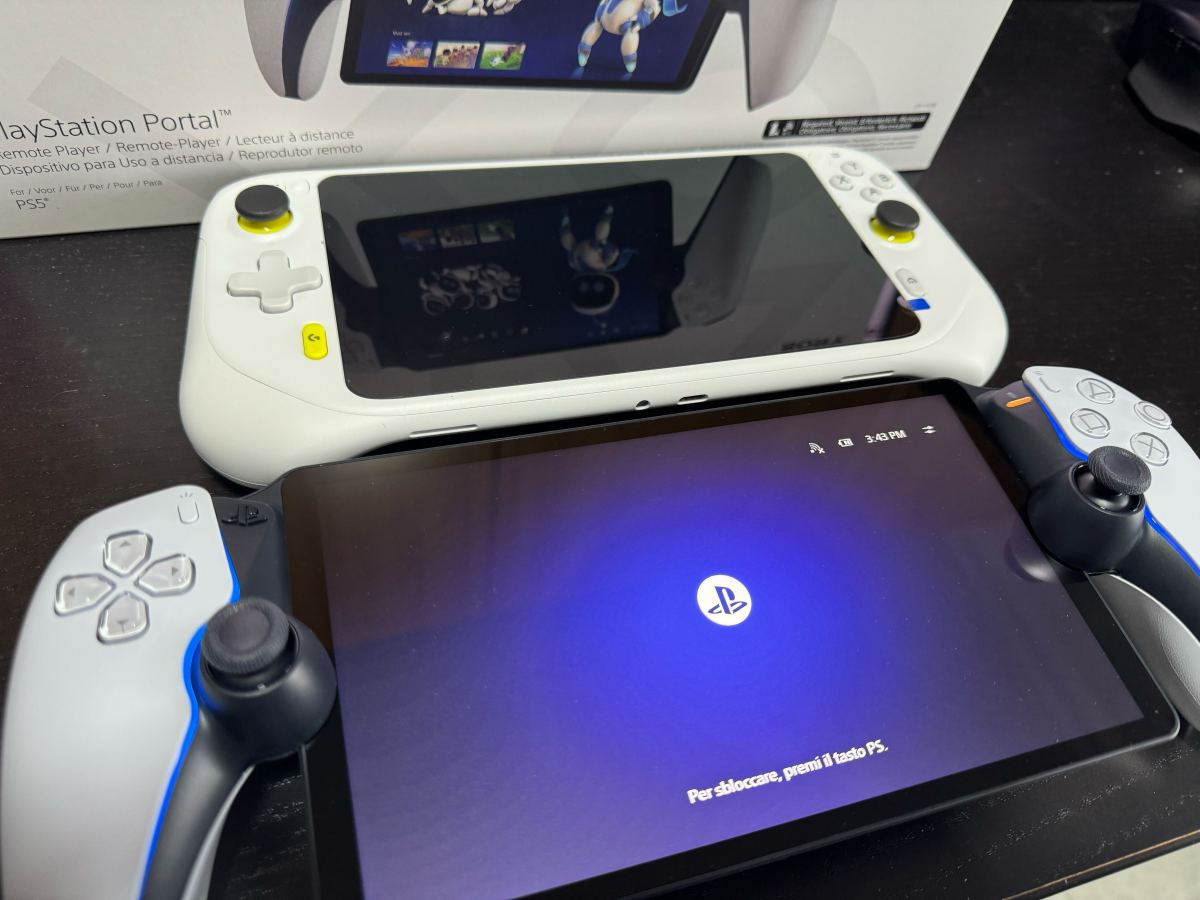
DualSense Edge had much better software customization and onboarding. Here, tutorials are pretty sparse, and we've not even been told about how to use the touchpad. The Edge even has a separate entry in the console's menu, which Portal hasn't. If nothing else, being a mirror of PlayStation 5, the good news is that the console can be turned off directly from the device (the same does not apply, unfortunately, to booting it up).
Finally, it's also disappointing that it doesn't support Bluetooth. If you don't want to buy the expensive Pulse Explore wireless earbuds releasing in December, your only audio option will be the good set of speakers, or wired headphones with a 3.5mm jack.
PlayStation Portal is a device you buy exclusively if you want access to convenient, quality remote play. Chances are you don't need it because it serves no other purpose. And if you look into it, you probably have alternatives at home that might be just as good. At the same time, the device comes with a bunch of shortcomings.
Sony has not made too many friends when it comes to pricing over the PS5 lifecycle, but all things considered, the $199.99 tag is surprisingly reasonable. If you want it for that and that alone - streaming from your always-on PS5 to a screen you can take anywhere on a home Wi-Fi network - the price is right, and it can be a tempting Christmas gift for those who just don't want to miss the latest gadget.
